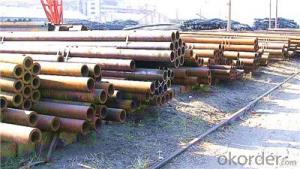Rebar, also known as reinforcing bar, is a critical component in many construction projects. It’s a steel rod that’s used to strengthen concrete, making it more durable and able to withstand greater loads. But did you know that there’s a variety of rebar available at your local Home Depot? Let’s explore the different types and how they can be used for every project, big or small.
The Importance of Rebar
Before we dive into the different types, it’s essential to understand why rebar is so important. It’s not just a random piece of steel; it’s a carefully crafted material that plays a crucial role in the structural integrity of buildings and other structures. Rebar helps to distribute the load evenly, preventing cracks and other structural issues that can arise from uneven weight distribution.
Types of Rebar Available at Home Depot
When you walk into Home Depot, you’ll find a variety of rebar options to choose from. Here are some of the most common types you might encounter:
1. Straight Rebar
Straight rebar is the most basic type. It’s used in a variety of applications, from residential construction to commercial projects. It’s typically used in concrete slabs, walls, and columns. The straight design makes it easy to handle and install, making it a popular choice for many contractors.
2. Hooked Rebar
Hooked rebar, as the name suggests, has a hook at one or both ends. This design helps to provide additional support and stability to the concrete structure. It’s often used in areas where extra strength is needed, such as in the corners of walls or in the foundation of a building.
3. Tied Rebar
Tied rebar is a bundle of rebar that’s tied together with wire. This type is used when multiple rebar rods are needed to work together to provide support. It’s often used in larger projects where a more robust structure is required.
4. Deformed Rebar
Deformed rebar has a pattern of ridges or deformations along its length. These deformations help to bond the rebar with the concrete, creating a stronger and more durable structure. It’s often used in areas where high strength is required, such as in bridges or high-rise buildings.
Choosing the Right Rebar for Your Project
With so many options available, choosing the right rebar for your project can be a bit overwhelming. Here are a few things to consider when making your selection:
– Project Size and Scope: Consider the size and scope of your project. Larger projects may require more robust rebar options, while smaller projects may be able to use the more basic straight rebar.
– Load Requirements: Think about the load your structure will need to support. If you’re building something that will need to support heavy loads, you may need to opt for a stronger type of rebar.
– Budget: Rebar can vary in price, so it’s essential to consider your budget when making a selection. Sometimes, a more expensive rebar option may be worth the investment for a longer-lasting and more durable structure.
Installation Tips for Rebar
Once you’ve chosen the right rebar for your project, it’s time to think about installation. Here are a few tips to ensure a successful installation:
– Proper Placement: Make sure to place the rebar in the correct location within the concrete formwork. It should be positioned according to the project’s design specifications.
– Proper Spacing: Rebar should be spaced evenly to ensure that the concrete can flow around it and bond properly.
– Securing the Rebar: Use chairs or other supports to hold the rebar in place during the pouring of the concrete. This will prevent it from shifting or moving.
– Curing the Concrete: After the concrete has been poured, it’s essential to allow it to cure properly. This will ensure that the bond between the rebar and the concrete is strong and durable.
The Benefits of Using Rebar
Using rebar in your construction project comes with several benefits. Here are just a few:
– Increased Strength: Rebar adds significant strength to your structure, allowing it to support more weight and resist deformation.
– Longevity: Structures built with rebar tend to last longer, as the rebar helps to prevent cracks and other structural issues that can lead to a shorter lifespan.
– Flexibility: With a variety of rebar types available, you can find the perfect fit for your project, no matter the size or scope.
Conclusion
Rebar is an essential component in many construction projects, and Home Depot offers a variety of options to suit every need. By understanding the different types of rebar and considering factors such as project size, load requirements, and budget, you can choose the right rebar for your project. With proper installation and care, rebar can provide increased strength, longevity, and flexibility to your structure. So the next time you’re planning a construction project, don’t forget to pay a visit to your local Home Depot and check out their rebar selection.

